Soviet scientific breakthroughs in the first decades after World War II sparked alarmism in the West — and overconfidence in Russian predictions about their own future. The Soviet Union tested its first nuclear weapon in 1949, only four years after the Americans bombed Hiroshima and Nagasaki. (After the Cold War did the world learn the Soviets had successfully spied on the American atomic bomb program, Project Manhattan.)
In 1957, the Soviet Union launched the first artificial satellite, Sputnik. Yuri Gagarin became the first man in space in 1961. Attempts to land a cosmonaut on the Moon were abandoned after the Americans won that one in 1969, but the Soviets still put the first remote-controlled rover on the Moon in 1970 and the first manned space station in Earth orbit another year later.
The Soviet Union had the world’s first mobile phone network, called Altai, and the first nationwide satellite TV network, Orbita. They pioneered corrective eye surgery in the 1970s. As late as 1980, the Soviet Union employed more engineers and scientists, relative to the world population, than any other major country.
Alternate history turbocharges these achievements. What if the Soviets had taken their enthusiasm for everything nuclear even further? What if Stalin hadn’t frowned upon cybernetics as a “bourgeois” distraction? What if the Soviet space program hadn’t stalled? In other words: what if the Soviet Union had “superscience”?
Atomic trains

After the Soviet Union became the second country in the world to master the atom, it developed an unrivaled enthusiasm for this new form of energy — and destruction. The world’s first nuclear power plant went online in the Soviet Union in 1954. The Soviets subsequently tried to put nuclear reactors in everything from icebreakers to trains.
In 1956, the Soviet Ministry of Railways looked into manufacturing supersized nuclear-powered trains, which would run on tracks three times wider than existing rails. These super-sized tracks were needed to accommodate the extra weight of radiation shielding.
The idea was to reach remote areas of the Soviet Union, where the trains could double as remote power stations on stops to bring electricity and heating.
Other than the issue of radiation, the need to expand bridges, embankments and tunnels on top of laying thousands of kilometers of extra track in some of the country’s toughest environments doomed the project.
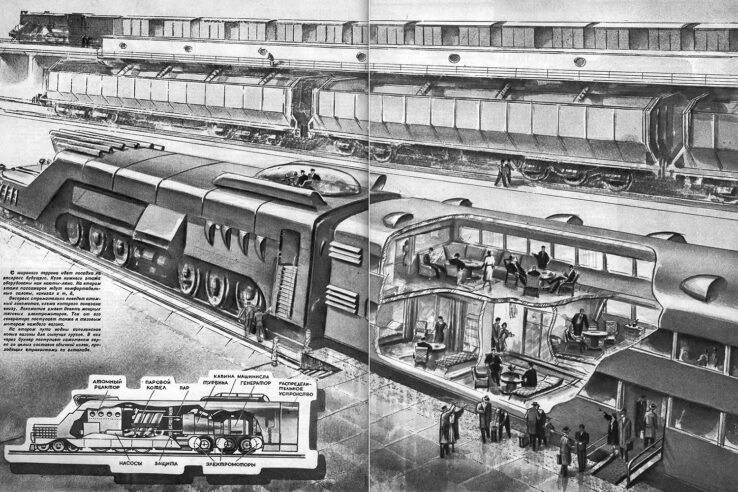
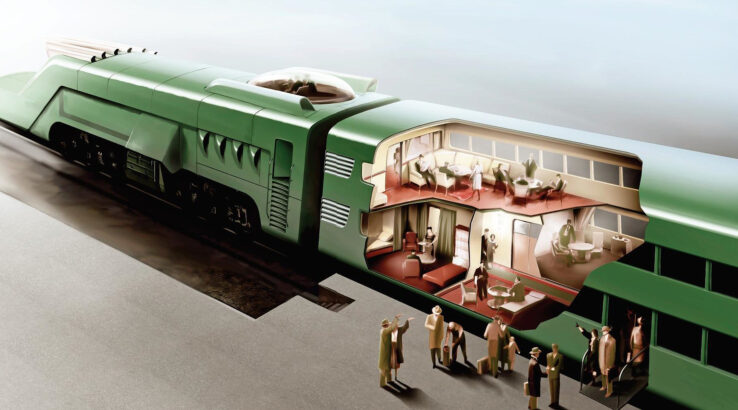
Big trains in the snow — not necessarily nuclear-powered — are still a meme in steam- and dieselpunk fiction, from the Syberia video games to Snowpiercer. Click here for more.
Reversing the rivers of Siberia
In late 1949, the Soviet Union claimed to have detonated a nuclear device to blow up a mountain range and start the reversal of two mighty rivers in Siberia: the Ob and the Yenisei. The goal, Life magazine reported at the time, was to turn the arid desert of what is now Kazakhstan into a “pastoral landscape”.
The Americans knew the project wasn’t new; since tsarist times had Russia dreamed of irrigating its vast hinterland. A serious study on reversing the great northern rivers had been undertaken since the 1930s. Now nuclear technology promised the possibility of simply blowing a hole in the mountains and opening a way for the Ob and Yenisei Rivers to flow southward.
Life wasn’t completely misinformed, but it had fallen for Soviet propaganda. Coming only three months after the Soviet Union conducted its first successful nuclear weapons test, there was no way it was ready to carry out a project on the scale Life reported in November 1949.
Click here to learn more.
Thawing the Arctic
Another great Soviet engineering project that was more fiction than fact was picked up by Popular Mechanics in 1956: the construction of a 55-mile dam between Alaska and Siberia to thaw the Arctic.
The barrier would keep icebergs and arctic currents out of the Pacific, allowing warm southern currents to sweep unchecked up the eastern shore of Siberia and down the western coast of North America. Warm water from the Pacific Ocean would be pumped back into the Arctic and transform the once-frozen region into a “blossoming landscape”.
Click here to learn more.
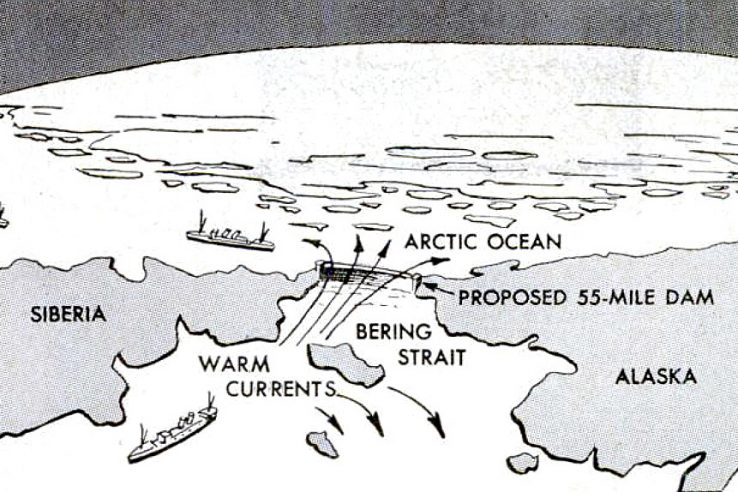

Tunnel under the Bering Sea
If not a dam, how about a tunnel? In 1959, Arthur C. Radebaugh imagined an underwater highway connecting Alaska and Siberia. Aside from the engineering challenge, the politics of the Cold War made this far-fetched. But perhaps in a world where Russia has taken back Alaska?
Click here for more of Radebaugh’s art.
Supersonic bombers
When America built the nuclear-powered Valkyrie bomber, which would comfortable cruise into Soviet territory at Mach 3+, the Myasishchev Experimental Design Bureau came up with the M-50. It had four jet engines: two underneath its wings, two more mounted on the wingtips. Aviation Week speculated in 1958 that the M-50 was nuclear-powered. It wasn’t. Only one flightworthy prototype was built. The proliferation of intercontinental ballistic missiles in the 1960s deprioritized the developmental of long-range bombers, including the Valkyrie, which also didn’t advance beyond the prototype stage.
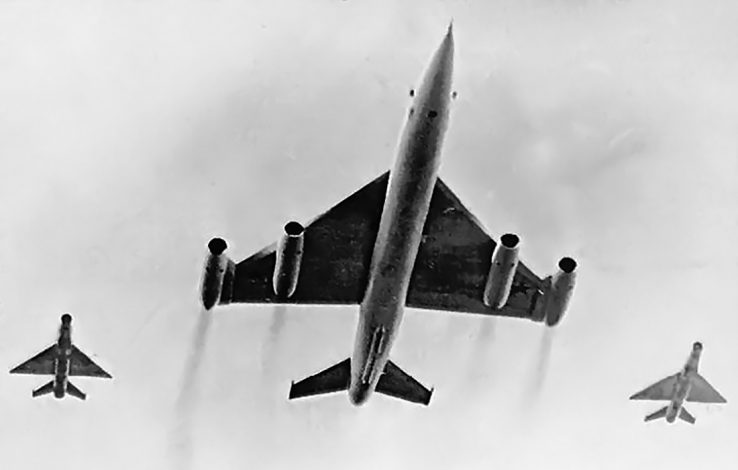
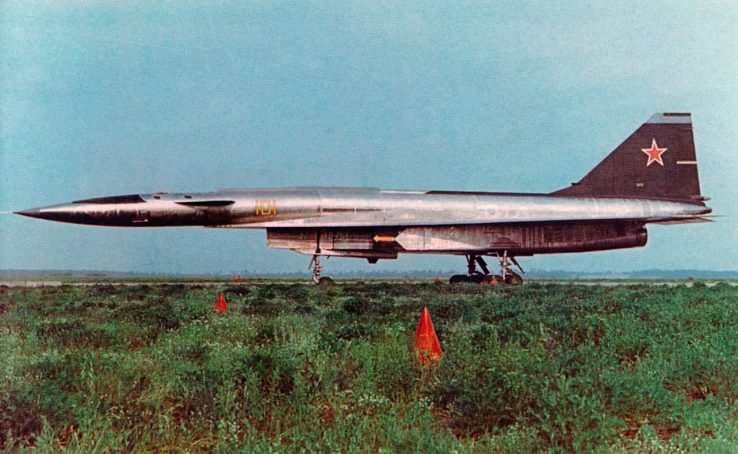
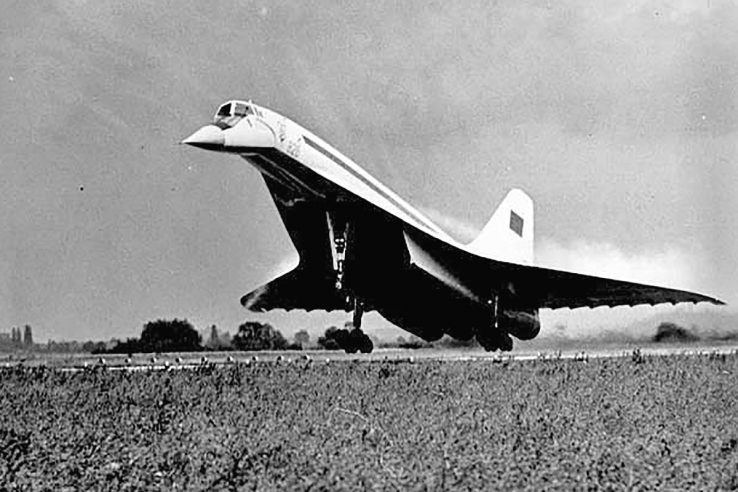
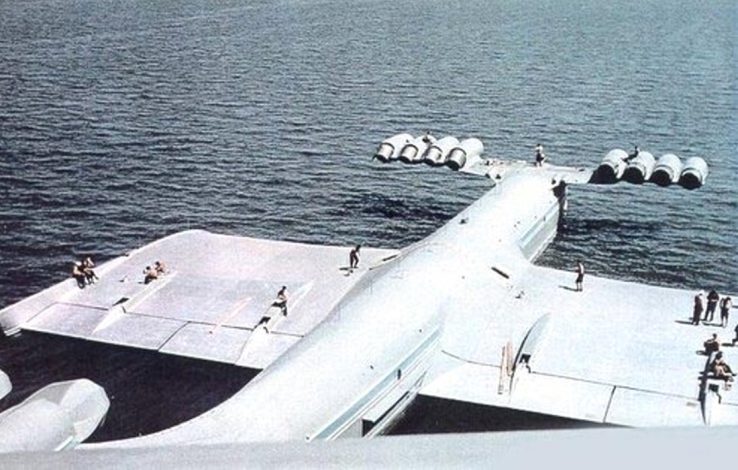
Other unusual Soviet aircraft designs included the bullet-shaped Sukhoi T-4 supersonic bomber, a Concorde lookalike and the “Caspian Sea Monster”, a ground-effect vehicle or — as the Soviets called it — ekranoplan.
In Charles Stross’ “Missile Gap,” first published in One Million A.D. (2005), the planet is mysteriously transformed into a flat Earth in 1962. Strategic bombers and intercontinental ballistic missiles are suddenly useless. A nuclear-powered ekranoplan captained by Yuri Gagarin is the only vehicle with the range and speed to explore humanity’s new home. Alex Jay Brady has created various artworks of what this thing might look like.
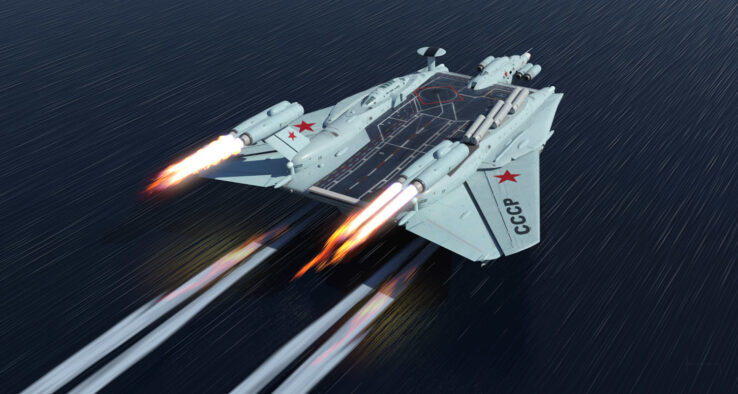
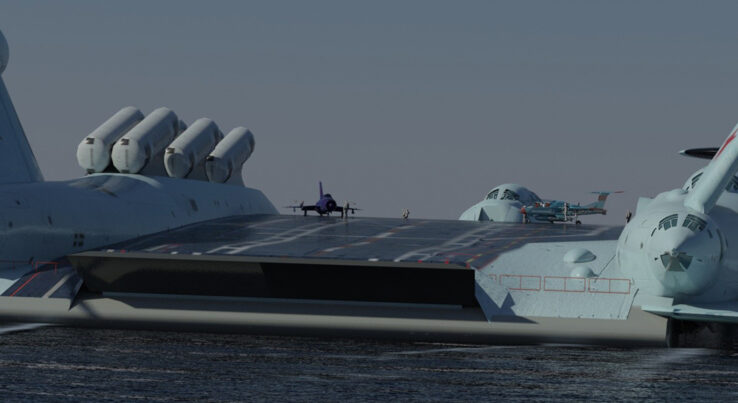
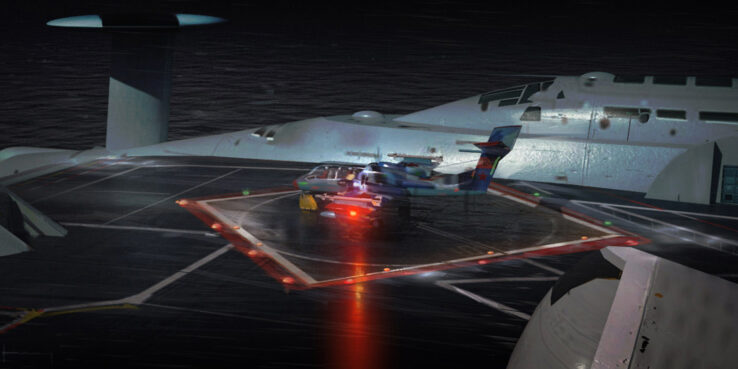
The 1961 Soviet science-fiction movie Barrier of the Unknown features an experiment hypersonic airplane called the Cyclone. It never existed. Its appearance and characteristics were borrowed from North American Aviation’s X-15.


The 1982 technothriller Firefox, starring Clint Eastwood, features an even sleaker fictional Soviet superjet: the MiG-31, codenamed “Firefox” by NATO, is capable of Mach 6, invisible to radar and its weapons are controlled by thought!
Click here for more strange aircraft of the Soviet Union.
Computers and robots
Research into cybernetics and genetics lagged under Joseph Stalin, who considered both “bourgeois” and “reactionary pseudoscience”. His more pragmatic successor, Nikita Khrushchev, lifted the ban on both, but the Soviet Union was never able to close the gap with the West in either field.
In one of the stories in Francis Spufford’s Red Plenty (2010), the Soviet Union experiments with computerized accounting to fight corruption. The country’s economic and political elites quickly pull the plug when they realize this will undermine the graft and nepotism upon which their very system thrives. The computer system is banned and the Brezhnev stagnation happens as it did in the real world.
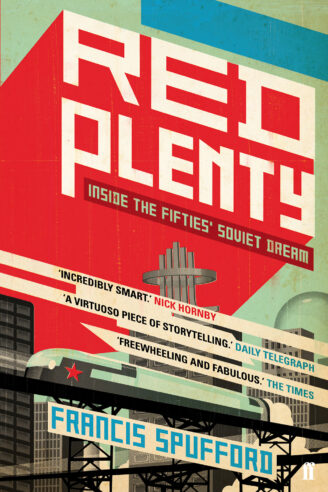
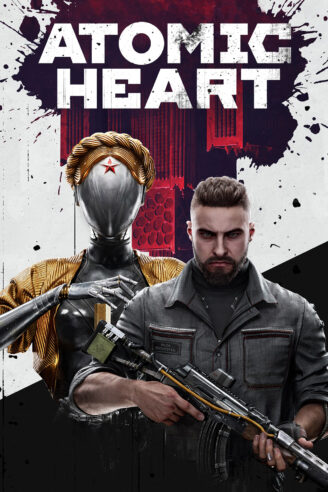
In the world of Atomic Heart (2023), the Soviet Union pioneered robotics in the 1930s, freeing much of the population from manual labor. When Germany invades in 1941, the Soviets quickly gain the upper hand. Just before the Nazis are defeated one year later, they release a deadly virus that kills millions across Eastern Europe. The Soviets build even more robots to make up the labor shortages, and link them together by a wireless network called “Kollektiv”. The next step is tapping people into this network, allowing them to control robots with their minds. Of course, that’s when things go horribly wrong.
The concept art and scenes from the game show how much more technologically advanced a Soviet Union with robot labor could have been.
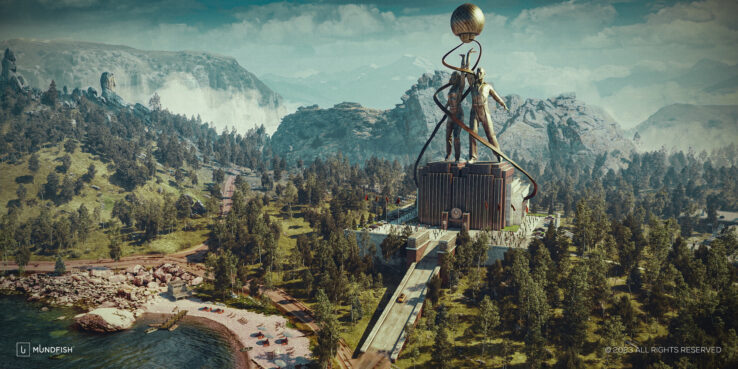
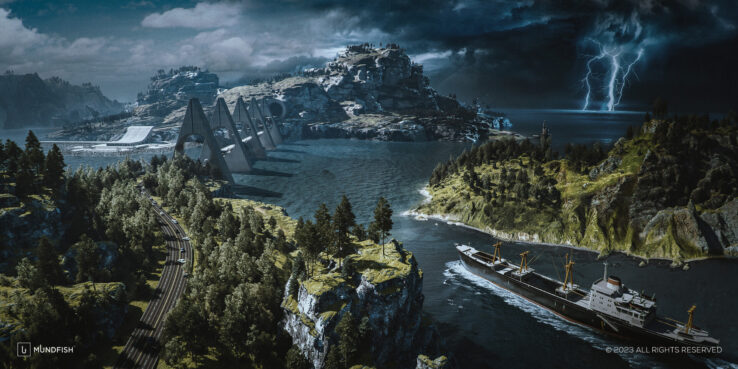


Death rays
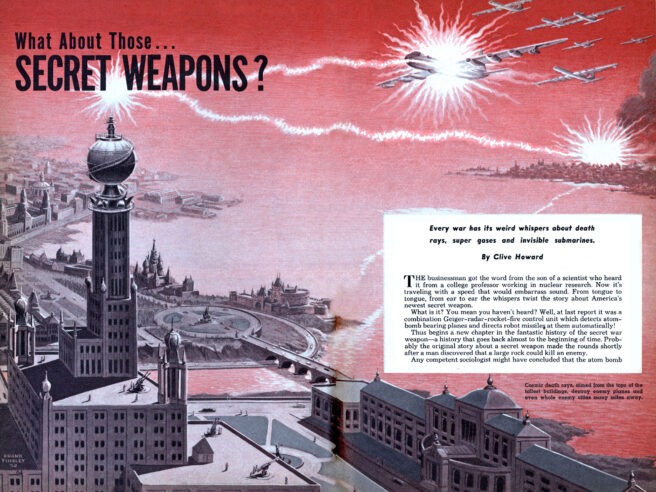
Mechanix Illustrated reported in 1951 on rumors red scientists had “succeeded in harnessing the same deadly rays given off by the sun but until now rendered harmless to man by distance and atmospheric interference.” Gigantic instruments the size of skyscraper could be set up along Russia’s borders to defend against nuclear bombers and even attack enemy cities thousands of miles away!
Soviets in space
The Soviets abandoned their lunar program after the Americans landed on the Moon in 1969. Apollo 18 (2011) suggests this was a coverup. The last Apollo mission (which never was) discovers an abandoned Soviet LK lander on the Moon as well as the remains of its dead cosmonauts.
The first Soviet mission to Mars was planned for 1971. The designation of the spacecraft was TMK, which was expected to take ten and a half months to reach the Red Planet, drop a probe and return to Earth. A Mars landing was scheduled for 1980 but never seriously developed. Maciej Rebisz, whose art imagines a Space Race that never ended, has a view of the Soviet Mars lander. The end of Iron Sky: The Coming Race (2019, our review here) reveals the existence of a hammer-and-sickle-shaped Soviet base.
Click here for more Soviets in space.
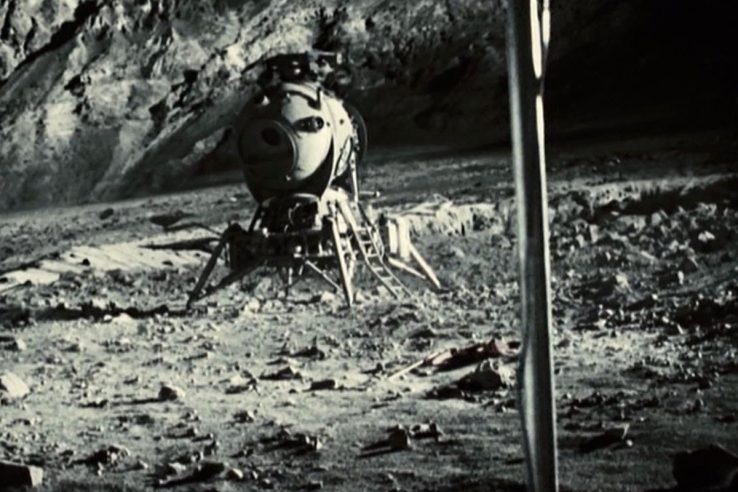


Super soldiers
The Command & Conquer: Red Alert games — set in a world where Albert Einstein traveled back in time and killed Adolf Hitler, inadvertently paving the way for a Soviet invasion of Europe — features all sorts of advanced Soviet weapons, including the heavily armored Tesla Troopers, who can attack other units with portable Tesla coils.
The Tesla Trooper’s armor is not too dissimilar from recent incarnations of the Crimson Dynamo, a codename adopted by various Soviet agents against Iron Man in the Marvel Universe.
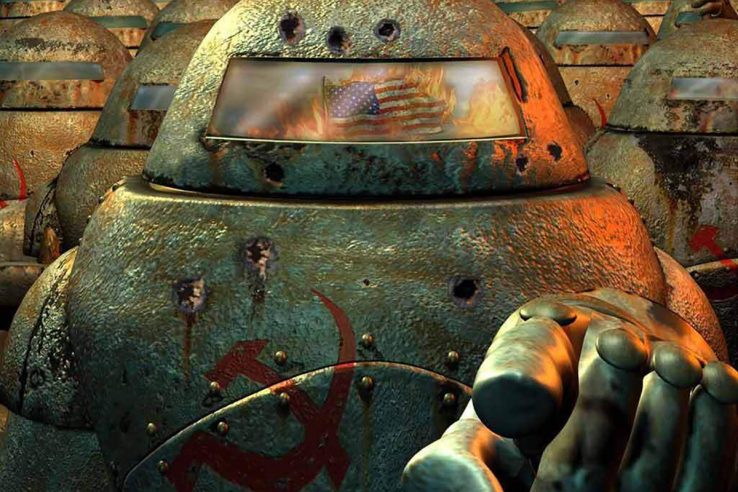
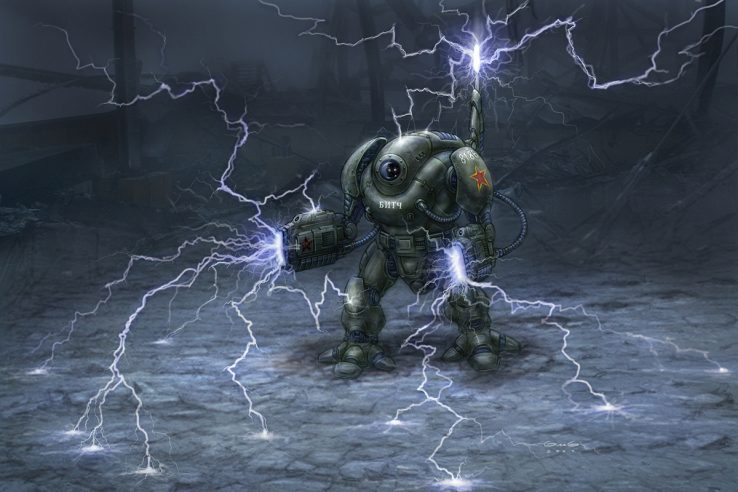

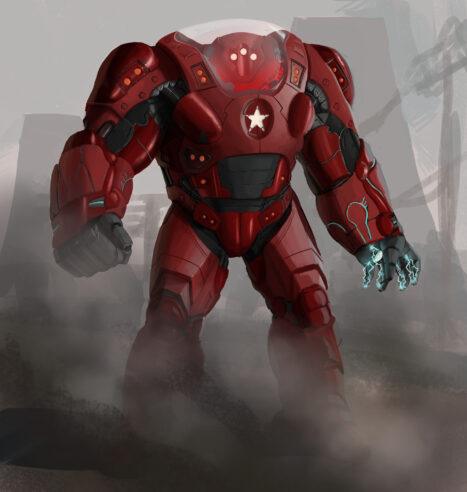
Psychic weapons
The best-known example of communist brainwashing in fiction must be Richard Condon’s The Manchurian Candidate (1959), which was twice adapted into a movie. But its communists are Chinese, not Russian, so it doesn’t count here.
An example of Soviet psychic warfare can be found in Oleg Divov’s Zombie Trail trilogy (1997). When the Soviet Union deploy their new psychotronic cannon, they inadvertently open an interdimensional rift that sucks in energy beings who turn people into zombies.
The 2006 video game You Are Empty (our review here) has a similar presence. Joseph Stalin, still alive and in power by 1955, deploys a massive psychic antenna to convert his population into “New Soviet Men”. The attempt goes horribly wrong. Most people are either killed or transformed into homicidal mutants.
One of the most popular characters in Red Alert 2 (2000) — he even got his own sequel (2001) — is the Rasputin-like Yuri, who uses mind control to prevent the United States from launching its nuclear arsenal in retaliation to a Soviet invasion. He then turns the American population into mindless slaves with gigantic psychic beacons.




Monstrous tanks
Red Alert also features Tesla Tanks. Their lightning bolts can pass over obstacles like walls and are extremely effective against infantry. An even more monstrous Soviet tank, the Apocalypse, runs on a hybrid diesel-nuclear power engine and boasts two forward-facing cannons that can destroy lighter vehicles with a single volley.
Click here for more weapons of Red Alert.
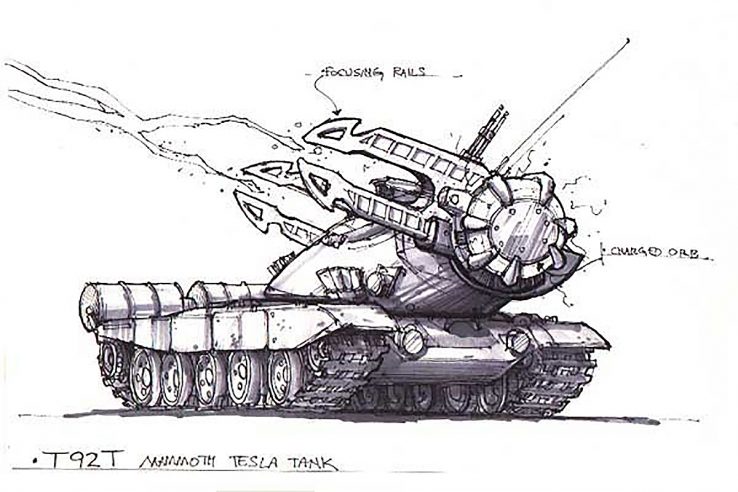
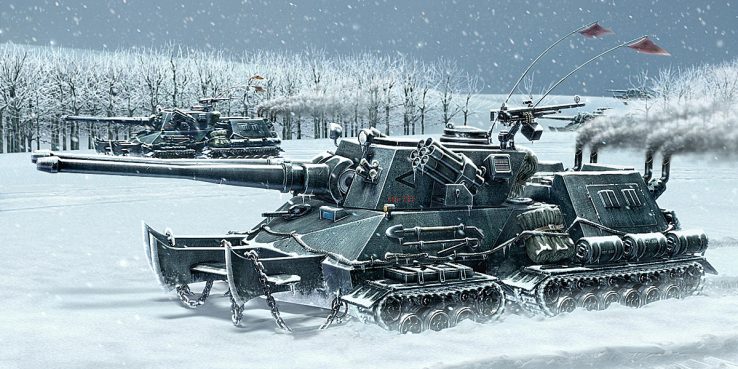
Actual monsters
Topping it off is Charlie Stross’ “A Colder War,” first published in Spectrum SF 3 (July 2000), in which the Soviet Union has harnessed the horrors of H.P. Lovecraft’s Cthulhu Mythos. They release shoggoths in Afghanistan and have something called a K-Thulu locked up in a bunker in Ukraine for in case NATO attacks. Needless to say, things don’t go as planned. Tor.com has an extensive review of the story if you don’t mind spoilers. Darren Tan‘s artwork is not directly related, but it depicts a scene not dissimilar from one in Stross’ story.
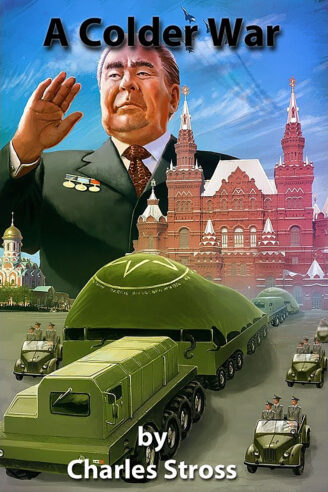


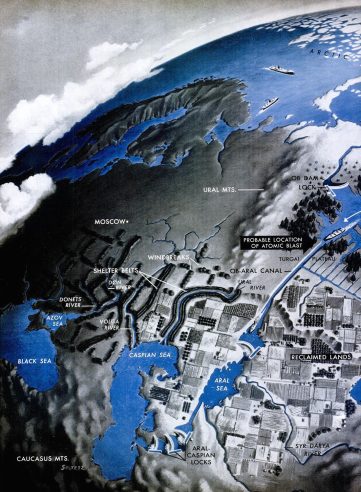
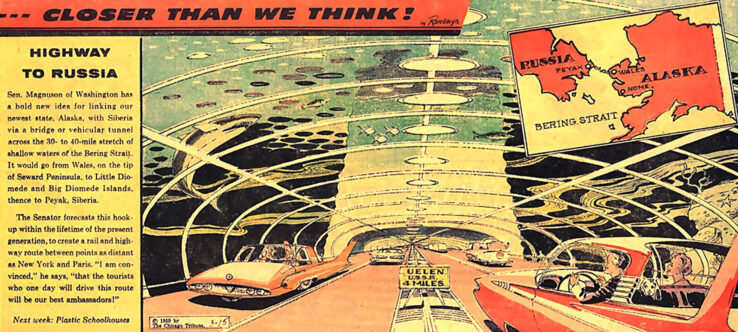
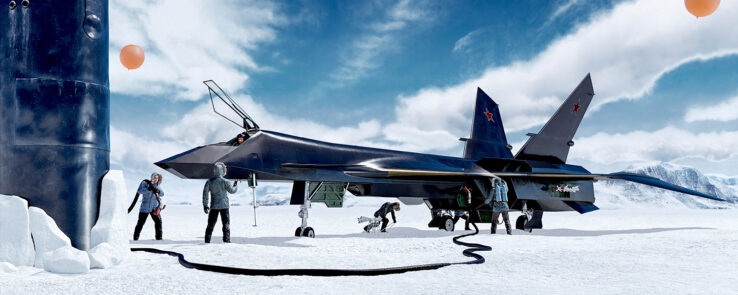

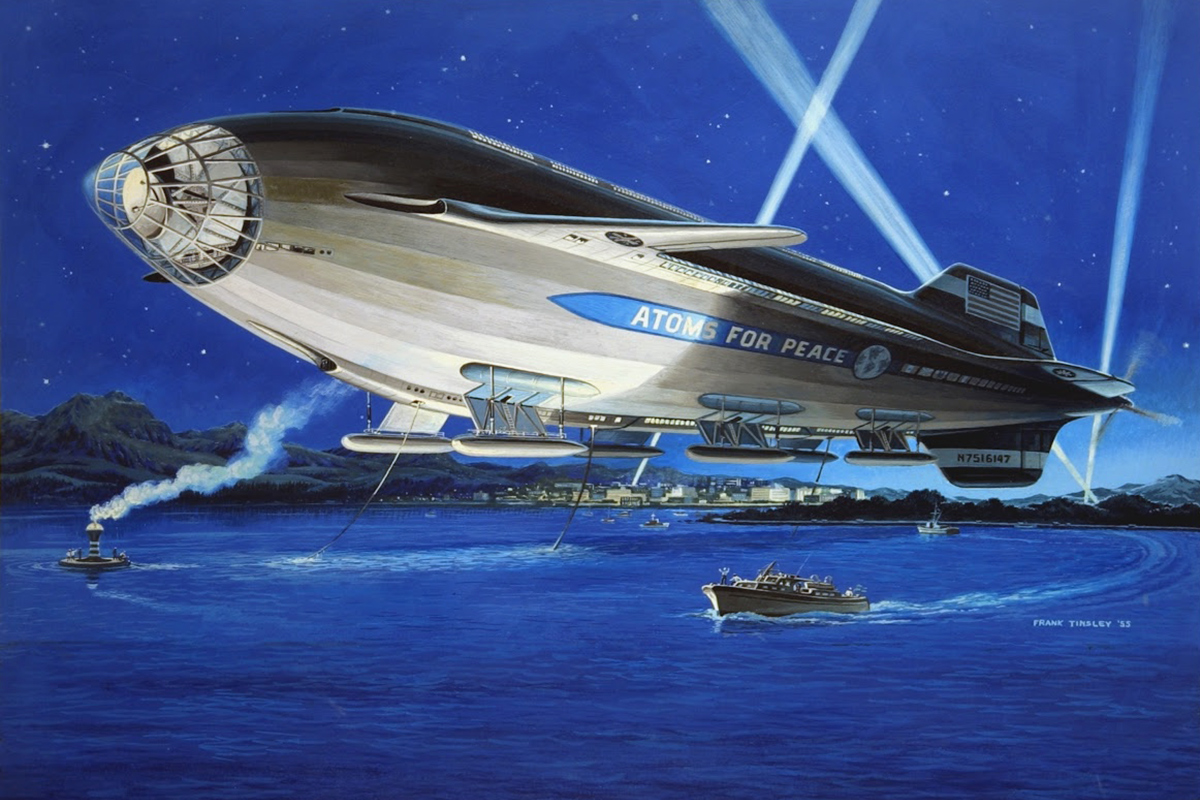
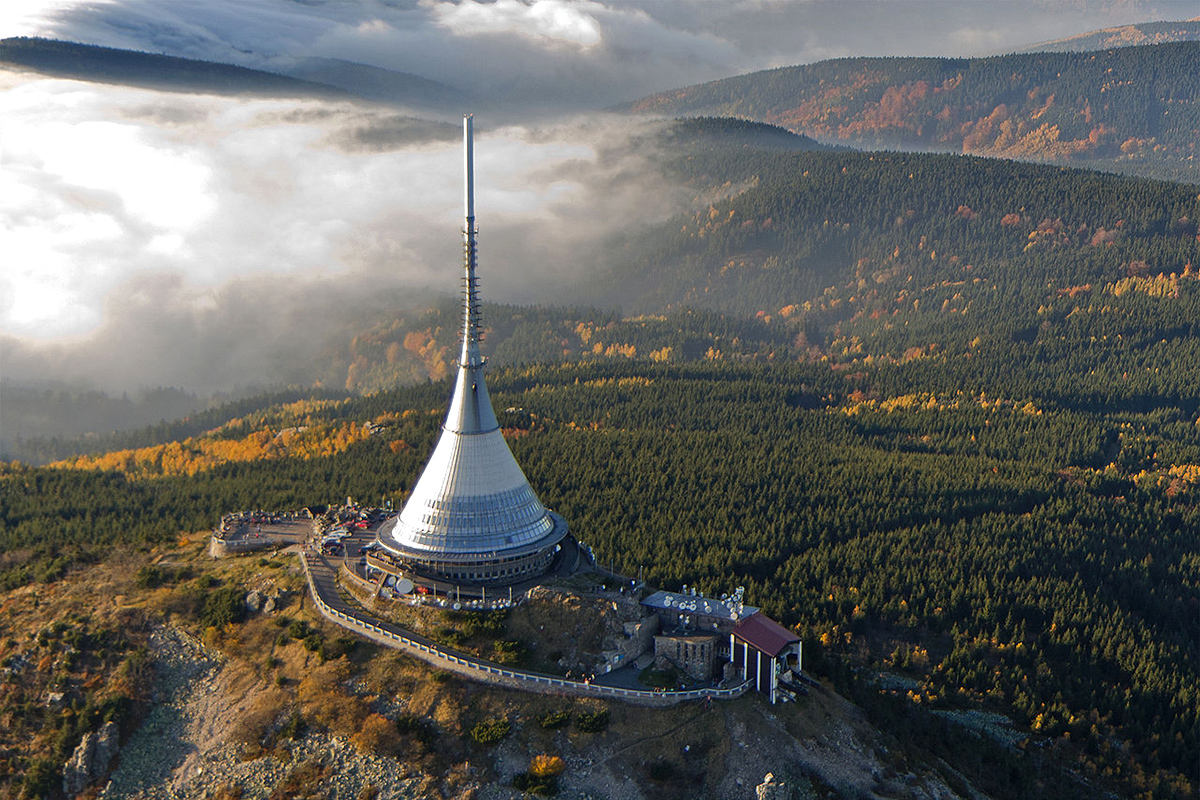

1 Comment
Add YoursOne of my favorite Soviet Superscience setting is in the 1999 Activision game Battlezone. The US and the USSR are in a race to harvest a macguffin “biometal” all across the solar system, and tactical tank battles break out on various planets and moons over the resource. The Soviet tank designs are fun and distinct.
I was so disappointed by Atomic Heart. Despite being gorgeous, its commentary on Soviet ideology was non-existent. The setting was indistinguishable from any “corporate research park with a deep secret” video game location.